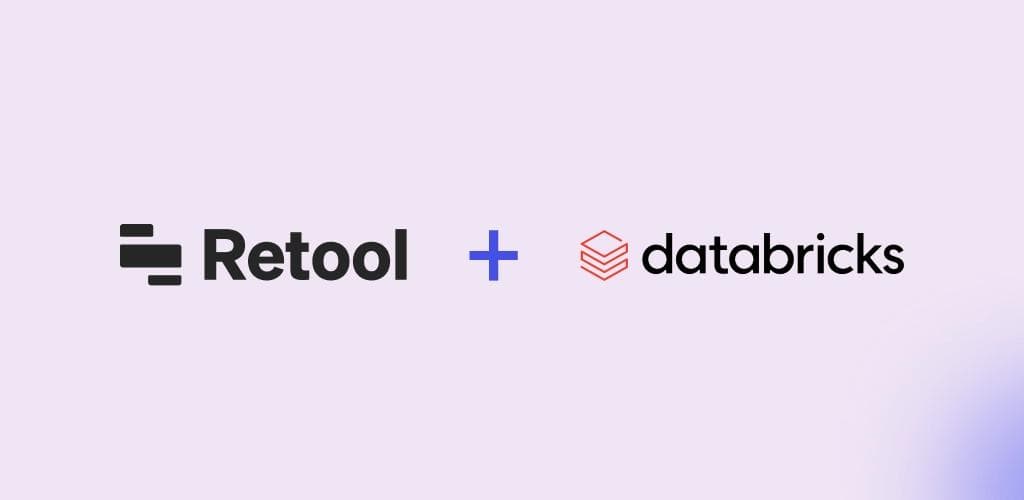Take a peek under the hood of internal applications at nearly any enterprise, and the story is the same.
“Spaghetti code.” Tool sprawl. Tech debt. Maybe the app is written in a dated language. Maybe the person who wrote it took a new job two years ago—leaving no documentation, no comments, no clues. This is the fate of many internal tools because they’re under less scrutiny, built on shorter timelines, and because we all have our own way of building things. Conduct an audit and there might be 20+ implementations of the same logic.
Left to fester, the codebase begins to rot. Maintenance gets deferred. Priorities change. Teams shift. Software that used to be a competitive advantage starts to feel like a liability.
An enterprise-grade approach to building internal software needs to be both efficient to develop and built to last.
At Retool, we often talk about that efficiency: building web apps, mobile apps, business logic, and databases fast. But we also talk about how to empower building in a sustainable, scalable way—by default.
What could this look like in practice, across a single platform offering?
In a dream world, all of your custom, operational software would be:
- Secure: An end user would never be exposed to data that they shouldn’t see. Standardized data-level security and role-based access control would ensure that this is the case, even as new employees, vendors, and partners enter and exit the business.
- Maintainable: Any developer—tenured or brand new—could quickly understand and improve the codebase. Code would be organized, commented, reviewed, and tested so that it evolves with the business rather than turning into tech debt.
- Reliable: Engineers would no longer dread on-call duty. Apps would be stable and performant, and notifications would be timely, descriptive, and actionable if something goes wrong.
- Scalable: As the business grows, so too would the applications supporting it—able to scale horizontally or vertically as usage changes.
- Consistent: Onboarding new users would be fast because every app would follow the same guidelines and use the same underlying technologies, powered by a shared visual design language and component library that can be enforced and updated wholesale.
The practice of software engineering has given us tools and tactics to achieve these ideals: code review, testing, RBAC, audit logging, instrumentation, shared component libraries, infrastructure-as-code, and so on. But tools and tactics are most useful when they’re easy to adopt and universally leveraged.
An application platform should apply these best practices automatically—and minimize toil to boot. That’s our goal with Retool: to provide the ideal properties of operational software, by default, across everything you build on your internal applications platform.
Beyond our app-building products, Retool seamlessly manages things like permissions, SDLC, analytics, and more in a tightly integrated way. We help platform administrators empower their teams to build on Retool—centralizing governance while minimizing overhead, maintenance, and risk. Ultimately, we want to ensure that everything built on Retool is secure, maintainable, reliable, scalable, and consistent from the outset—with absolute minimum setup.
While we have a ways to go before this aspirational platform is fully realized, we’ve made a lot of progress toward features foundational to this vision. Over the last few years, we’ve added:
And we’ve seen companies take advantage of the platform to great effect. DoorDash shipped two years of its internal tools roadmap in three months. Orangetheory Fitness scaled apps to 1600+ franchised studios. EquipmentShare unlocked a multi-million dollar product by digitizing construction industry tools.
Today we’re excited to release our next wave of platform capabilities. These new features provide more ways to govern Retool at scale, and offer greater flexibility around organizing teams, securing data, delegating permissions, and more:
- Spaces: Isolated workspaces for individual teams or initiatives to manage their own apps, permissions, resource connections, and Git repos, while sharing core infrastructure with other teams using Retool.
- Platform APIs: Endpoints for nearly anything you’d do on the settings page: manage Spaces, provision users, grant permissions, organize folders, and more. Administer Retool programmatically and integrate Retool management into existing governance systems.
- Extended permissions: Data-level permissions that specify which end users can query which data resources in which environment, ensuring that all apps built on Retool are secure by default. (Available to self-hosted customers, coming soon to cloud.)
- Orchestrate Retool governance using Retool: Workflow management to trigger scripts, alerts, and ETL tasks when users sign up, request access, log in, and more. Run custom logic based on custom user metadata, send custom emails, and call Retool’s platform APIs to take action. You can use Retool itself to build the software and policies that govern Retool applications.
One way to imagine how this takes shape within your organization is to consider Retool to be an extension of existing cloud and data infrastructure—the application layer for a business. Your data is in a warehouse, your services run in a cloud provider, your business process sources-of-truth are in an ERP. Retool is the next layer up the stack: a consistent and centrally governable foundation on which nearly anyone can build applications and workflows that extend, connect, and act on the sources of truth.
Over the next few months, we’ll be working on further platform features around reliability and maintainability, including things like testing support, observability integrations, programmatic releases, and more flexible workspace organization.
To learn how Retool can help your organization build operational software at scale, join us on November 16. We’ll be talking with Pinterest about how they’ve scaled Retool usage to be their default internal tool platform of choice, across hundreds of developers and thousands of end users. Come along with us as we dream up and build the future of software development.
Reader



